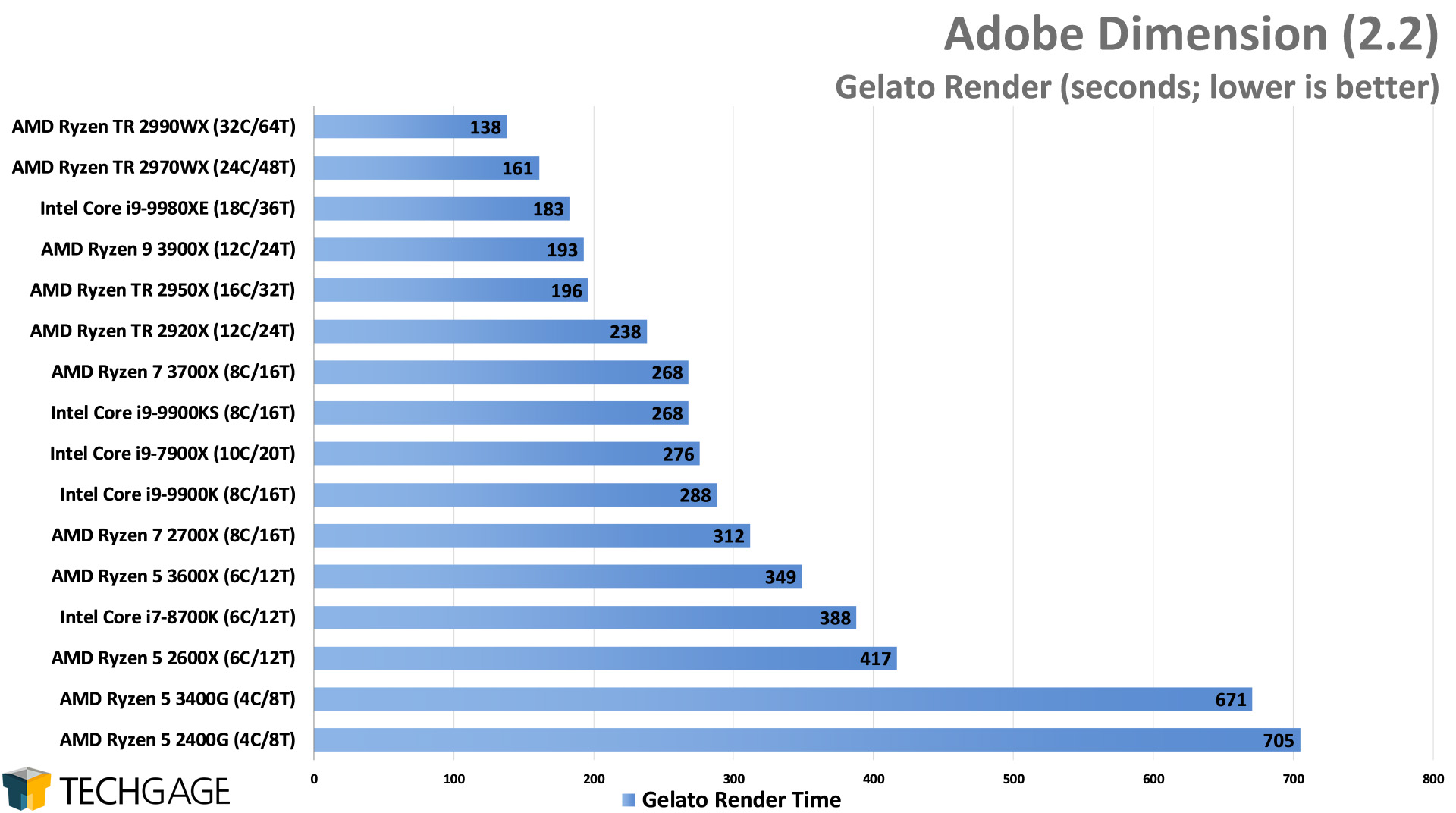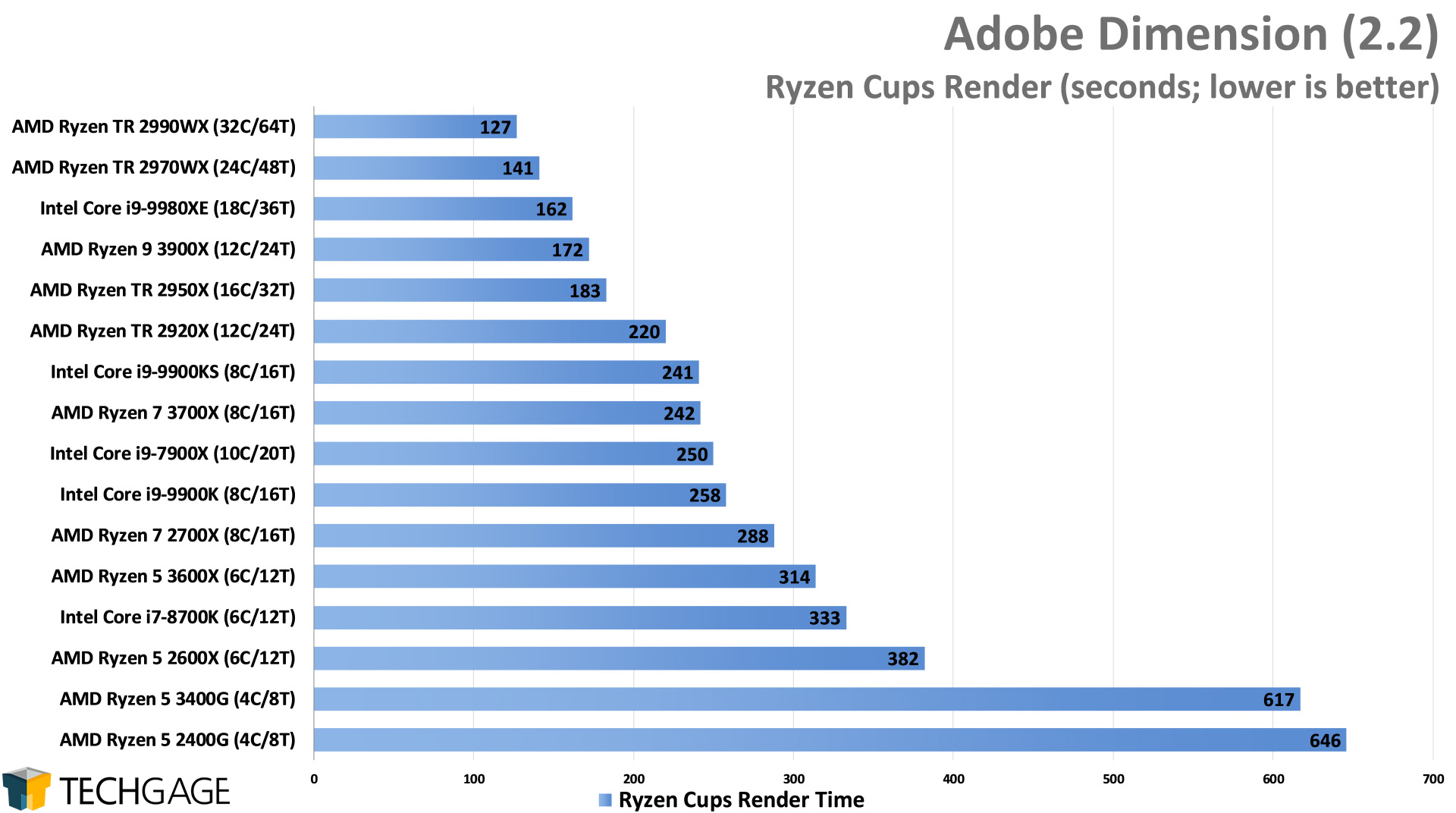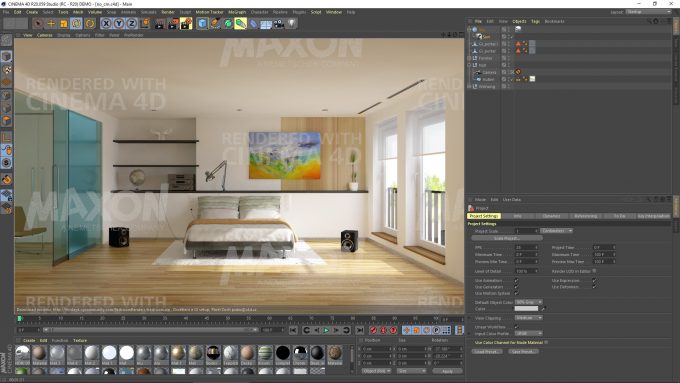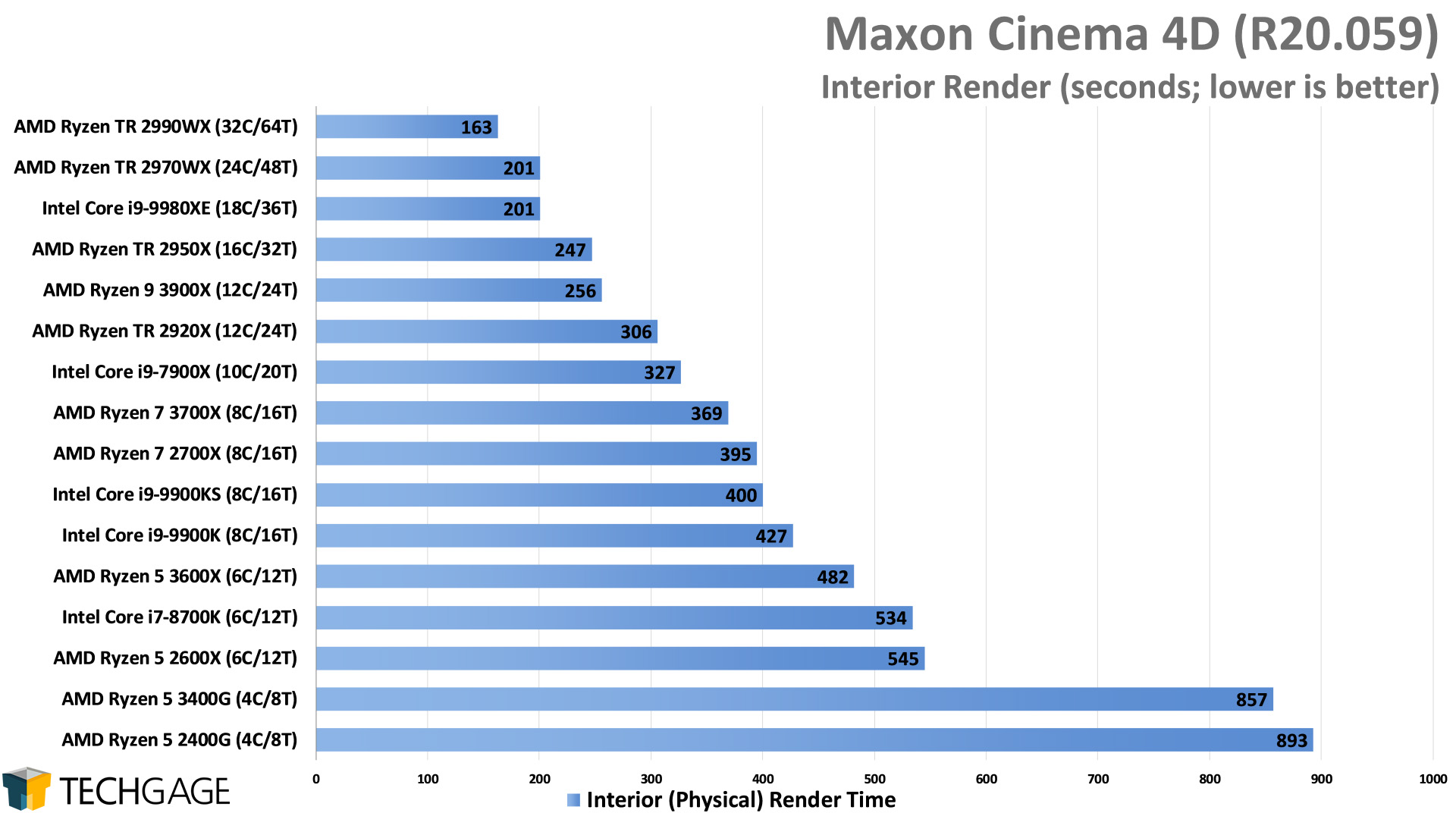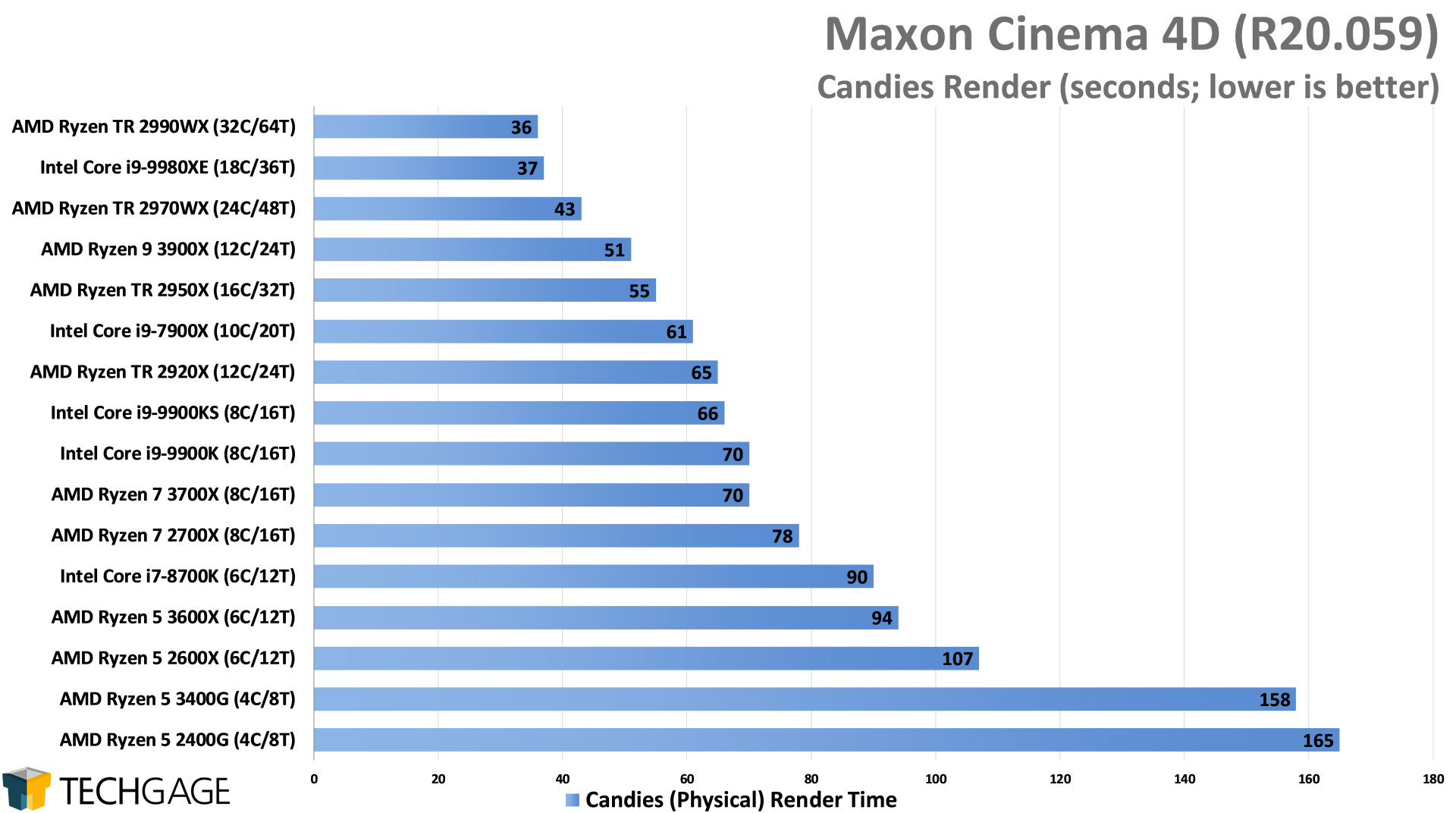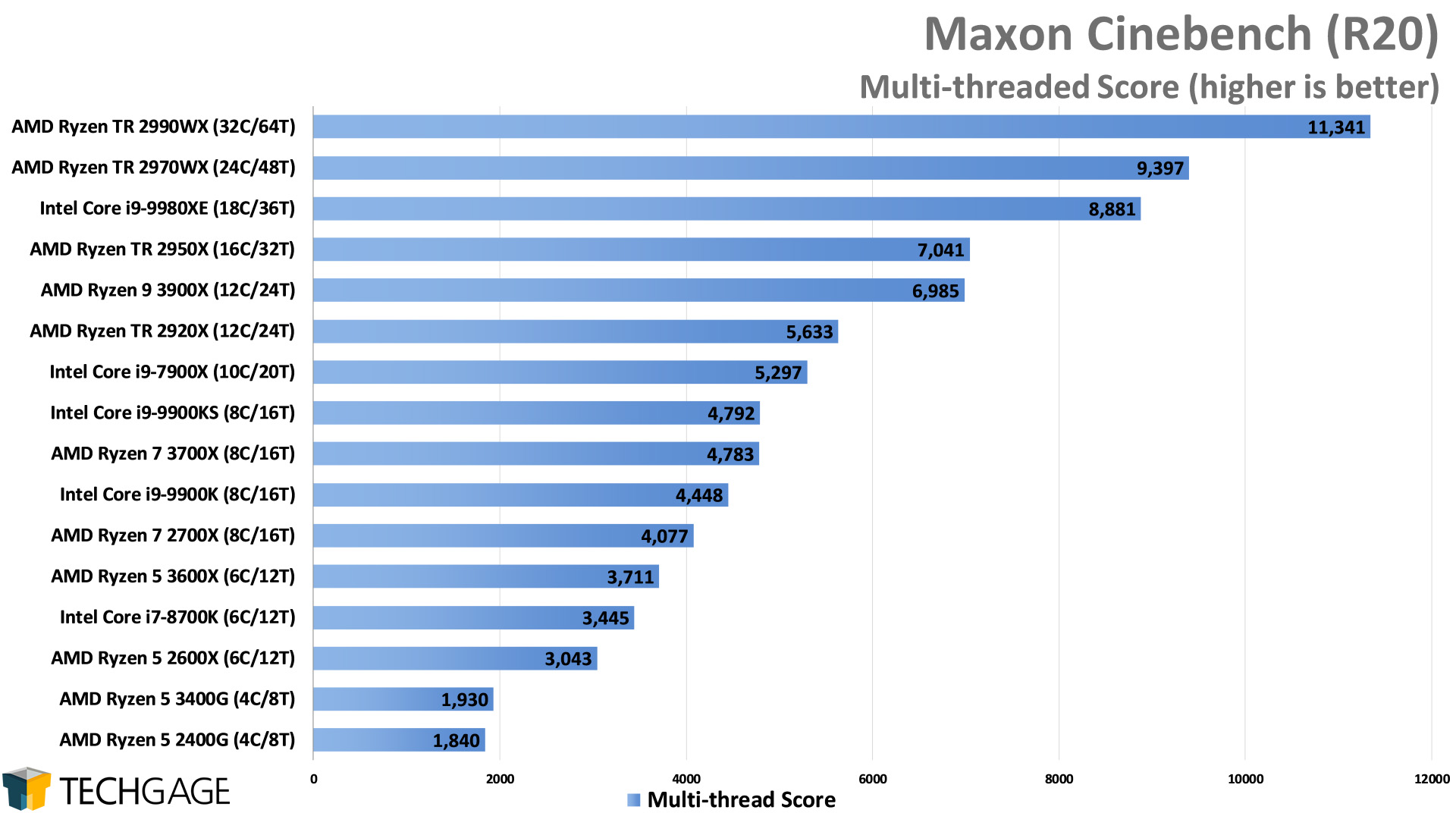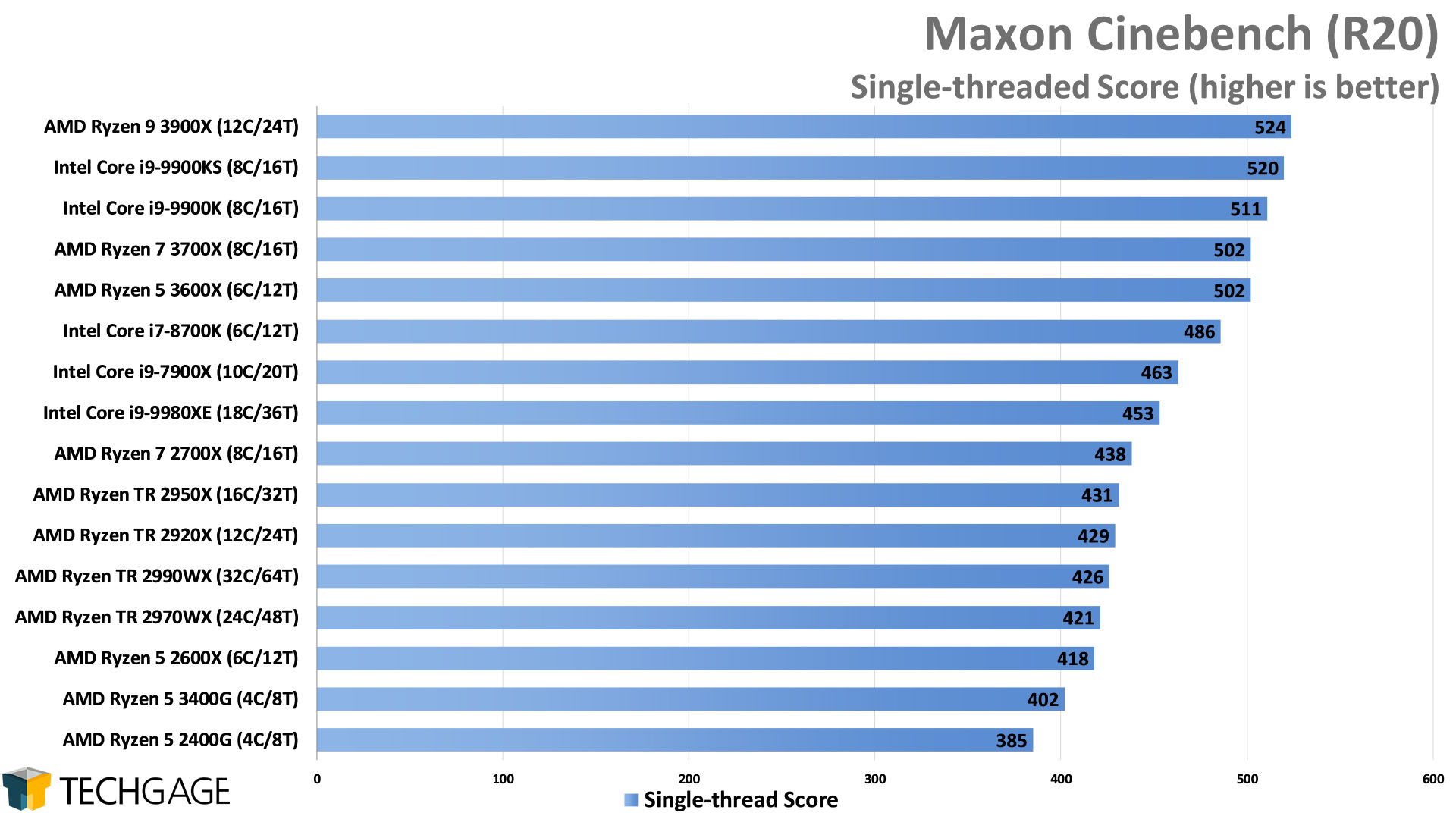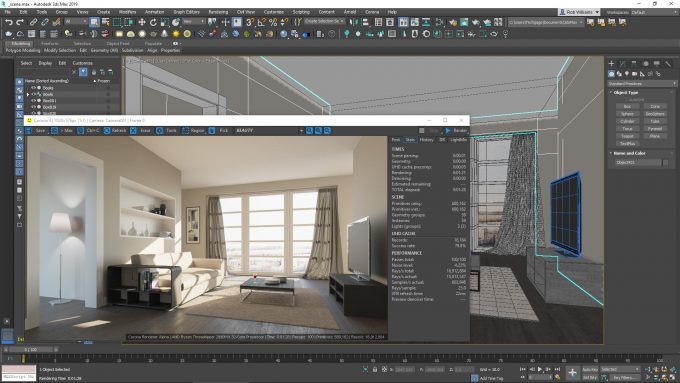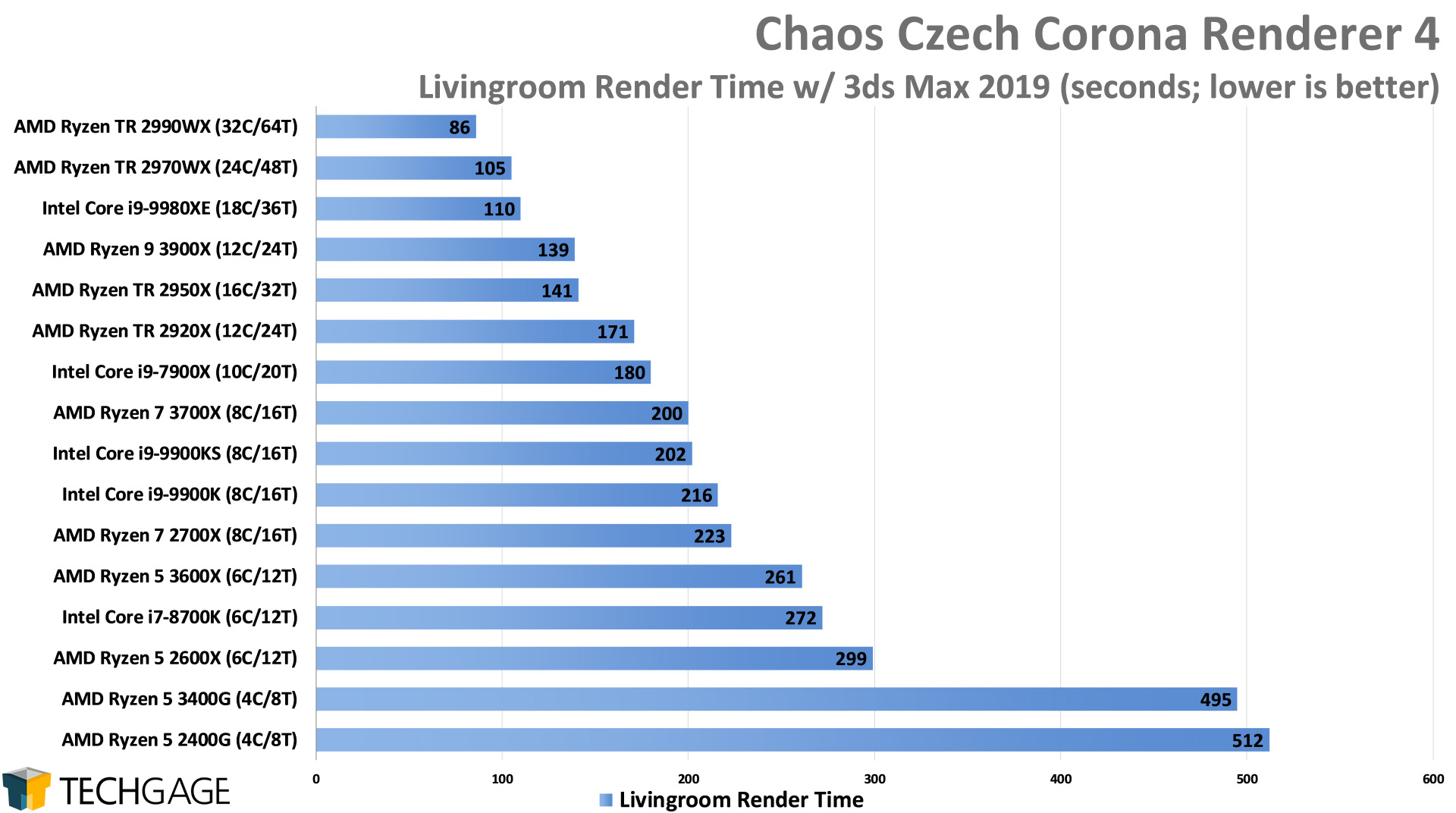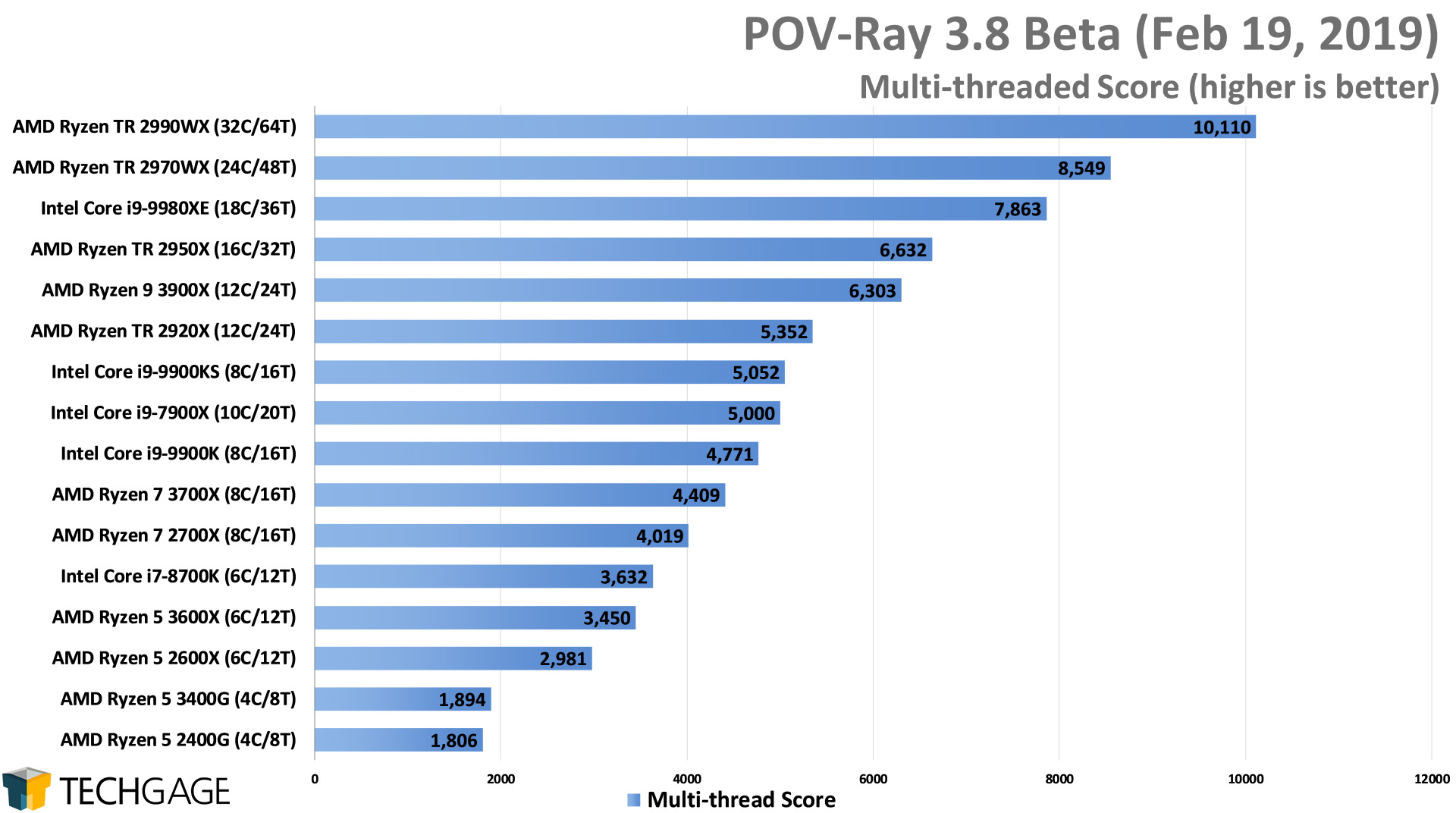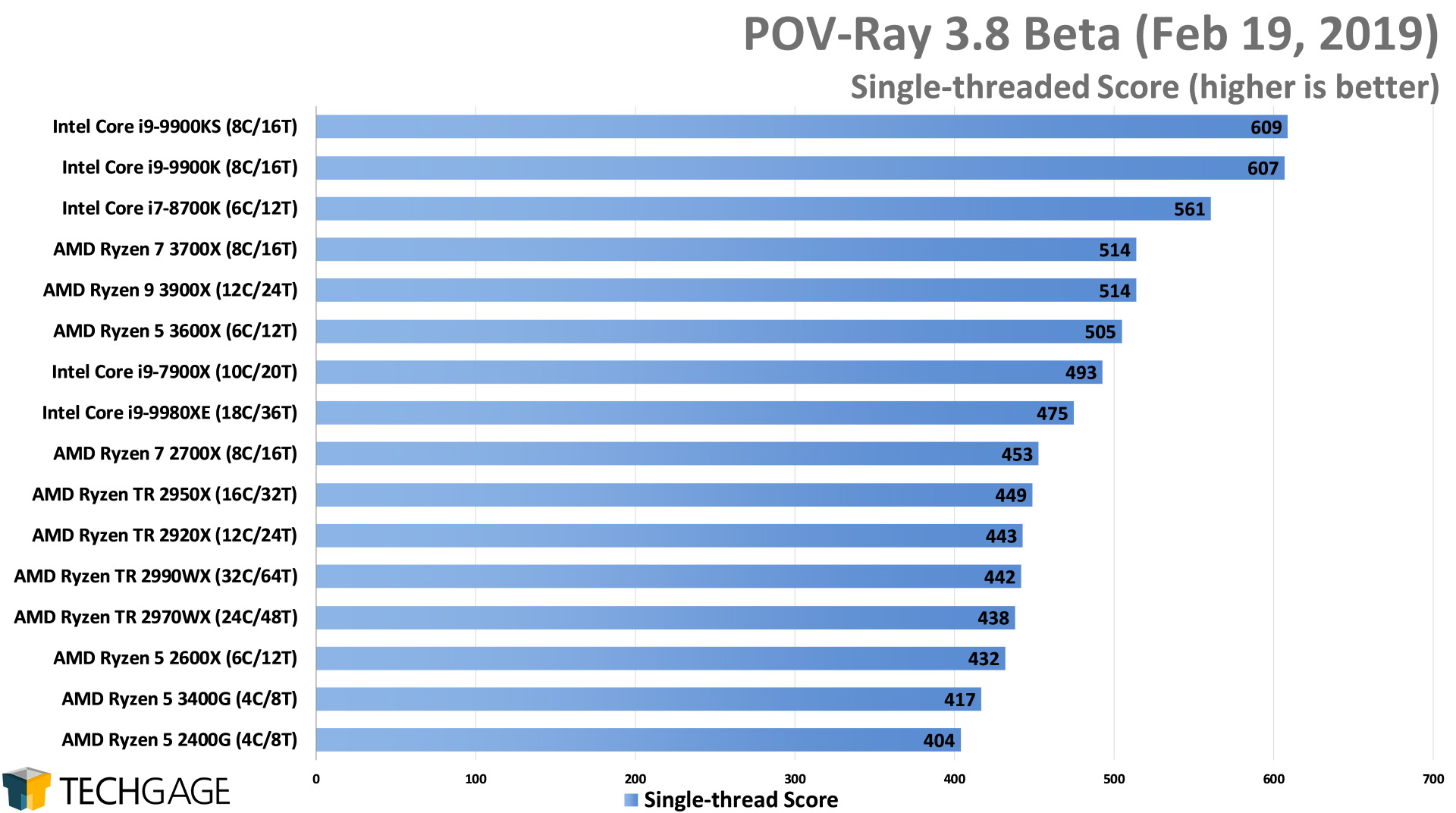- Qualcomm Launches Snapdragon 4 Gen 2 Mobile Platform
- AMD Launches Ryzen PRO 7000 Series Mobile & Desktop Platform
- Intel Launches Sleek Single-Slot Arc Pro A60 Workstation Graphics Card
- NVIDIA Announces Latest Ada Lovelace Additions: GeForce RTX 4060 Ti & RTX 4060
- Maxon Redshift With AMD Radeon GPU Rendering Support Now Available
Eight Cores At 5GHz: Intel Core i9-9900KS Review
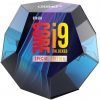
With competition in the CPU market proving to be fiercer than ever, Intel has decided to haul out some big guns. “Big guns” in this case refers to eight cores running at 5GHz a piece. This comes to us in the form of the Core i9-9900KS, and you can join us as we pit it against the rest of our collection in creator and gaming workloads.
Page 6 – Rendering: Adobe Dimension, Cinebench, Cinema 4D, Corona, POV-Ray
We covered a handful of major renderers on the previous page, but we’re not done yet. On this page, we’re going to take a look at a few more, including some industry mainstays and newbies. Adobe’s Dimension is one of the newest renderers to our testing fleet, which yet again joins Corona Renderer, which joined the fun about a year ago.
To give you an opportunity to test your own hardware against ours, we’re also including the ever-popular Cinebench standalone benchmark, which represents current R20 performance. This test, along with the latest version of POV-Ray, act as our only single-threaded angles in the article. For good measure, the performance on this page will be capped off the real Cinema 4D, to see how it agrees with CB.
Adobe Dimension
Dimension is another application that recently received a major overhaul, so 3.0 will be featured in our next CPU review. And based on initial impressions, it’s a major update all-around, greatly improving performance in our tests so far. Like KeyShot, Dimension also just gained CUDA GPU support, so we’ll soon be copying our Dimension tests over to the workstation GPU suite, and see how things fare on that side.
We’re not seeing much of a shake-up here, proving that rendering really does care more about cores than anything else. V-Ray is a bit of an exception since it seems clear that it’s Intel-optimized, but overall, if you take CPU rendering seriously, you’ll want more than eight cores in your desktop.
Cinema 4D & Cinebench
Because the upgrading love just can’t stop, our next CPU review will be using Cinema 4D R21, but in our initial testing, we’re not sure that there is much of a difference between the last and current generation. That said, we’ll be digging deeper into R21 more than we have with C4D in the past, so we’re hoping to add some more useful tests, including viewport (since Cinebench R20 dropped that test).
Nonetheless, we’re seeing more of the same here, with cores mattering a lot. There’s definitely a reason AMD had been talking about Cinebench so much after its Zen launch, and until Intel has even bigger CPUs, it’s going to be hard to compete at the top-end (but thankfully, the next Core X series will be priced to scale better than the last-gen did.)
One test we don’t do with the full C4D is a single-threaded one, because it’s a useless metric for real-world use. However, CB does give us a basic impression of IPC or at least single-threaded performance, and as we’ve seen with the Zen 2 launch, Intel lost its lead, but comes awfully close with the 9900KS.
Corona Renderer
It’s pretty impressive that so many applications have been updated recently – including Corona. Version 5 came out recently, and in our initial testing, there’s been no performance difference made to our projects. However, we don’t have ideal projects, or any that use caustics, which Corona 5 vows to improve performance for.
As with the majority of renderers, nothing can compete with the highest core-count chips. Even the 2990WX manages to set aside its occasionally odd performance scaling to knock it out of the park here. Meanwhile, the 9900KS continues to show the 9900K who’s the real boss of Intel’s mainstream lineup.
POV-Ray
With Cinebench, we saw that AMD’s Zen 2 stormed past Intel in some cases, and while we’re not exactly sure what it is about the architecture that led to such a boost, POV-Ray can prove that Intel still has strengths in other places. In the single-threaded test here, the KS takes top billing, barely beating out its own 9900K sibling. Meanwhile, third place still belongs to Intel with the 8700K.
Again, single-threaded performance isn’t always a great gauge of fast rendering, but it’s still useful to see how the fastest chips compare to the slower ones. POV-Ray 3.8 is currently in beta, so we may very well see results shake up a little bit by the time the “final” version releases.
Support our efforts! With ad revenue at an all-time low for written websites, we're relying more than ever on reader support to help us continue putting so much effort into this type of content. You can support us by becoming a Patron, or by using our Amazon shopping affiliate links listed through our articles. Thanks for your support!





